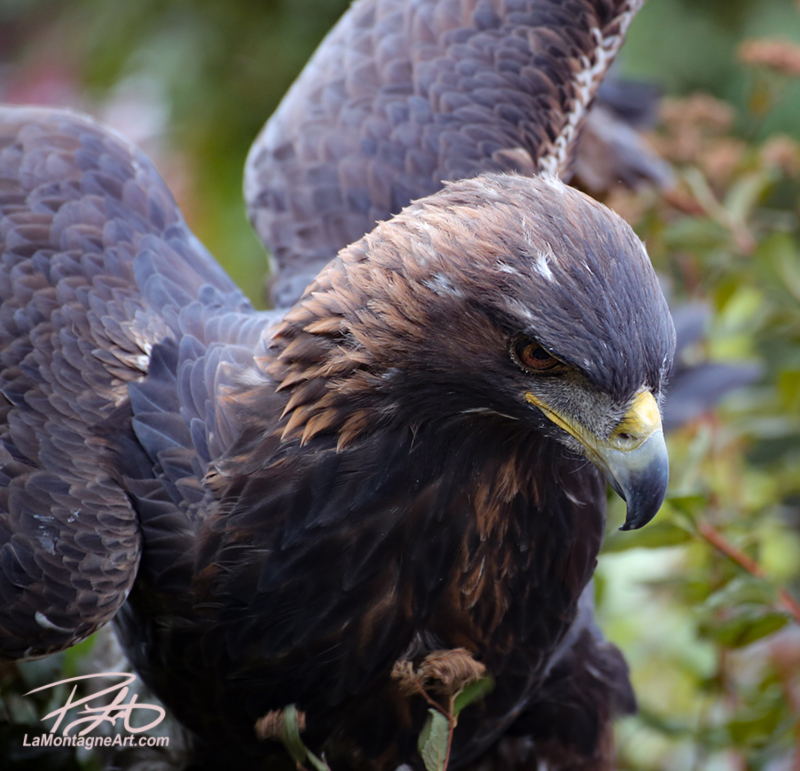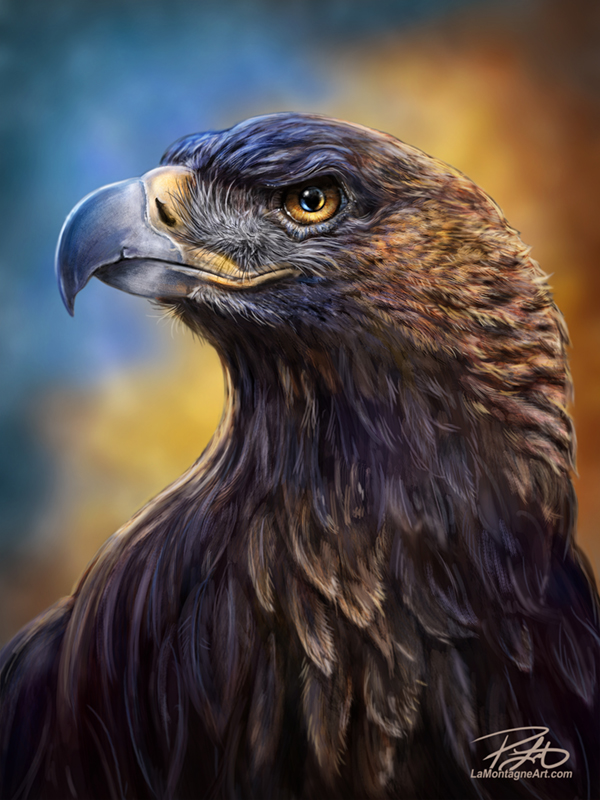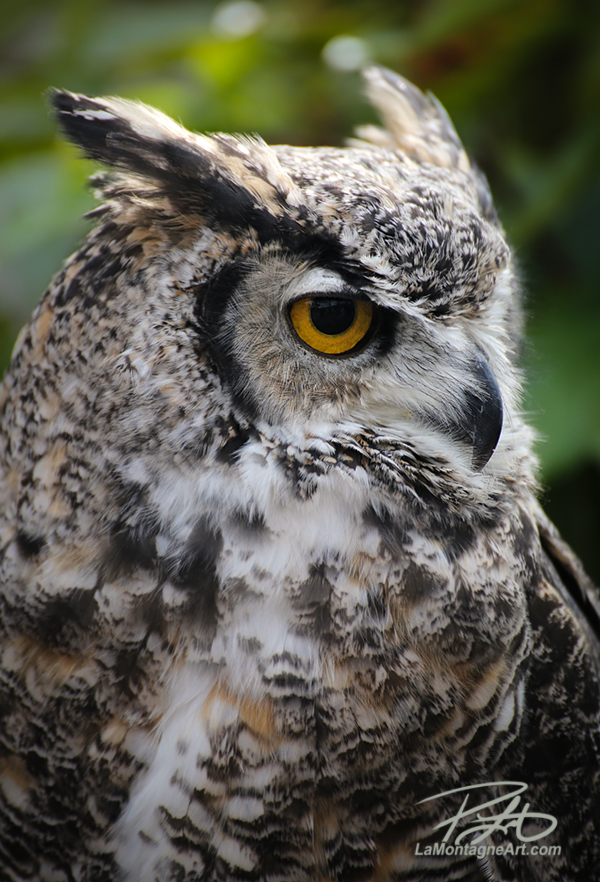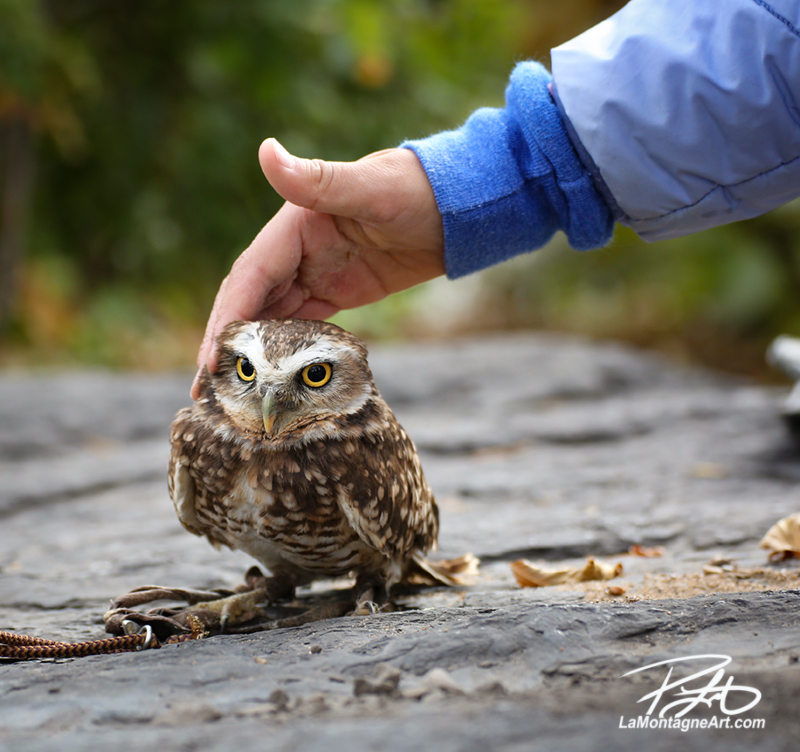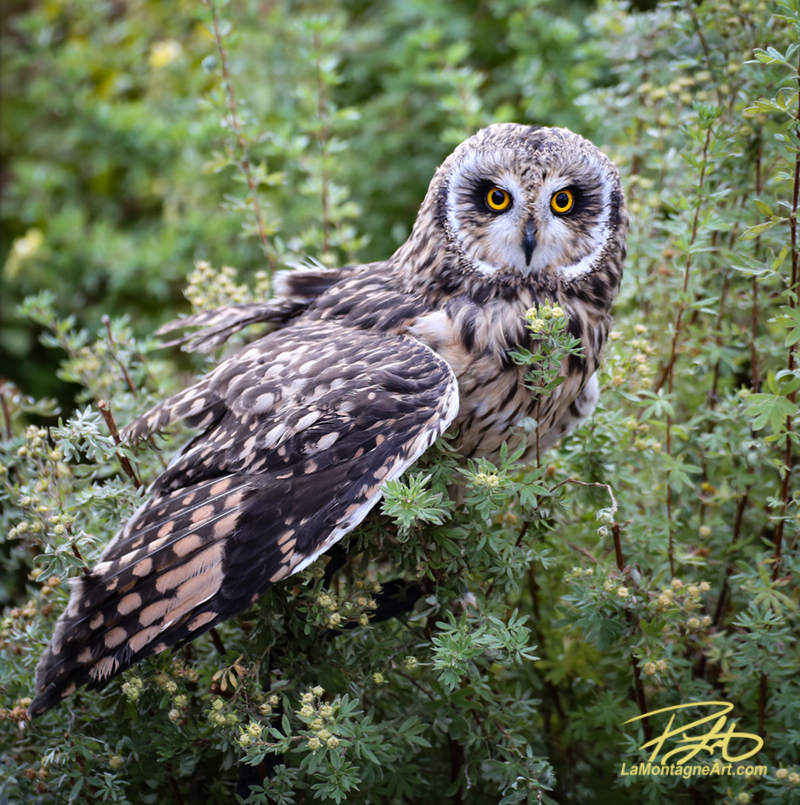
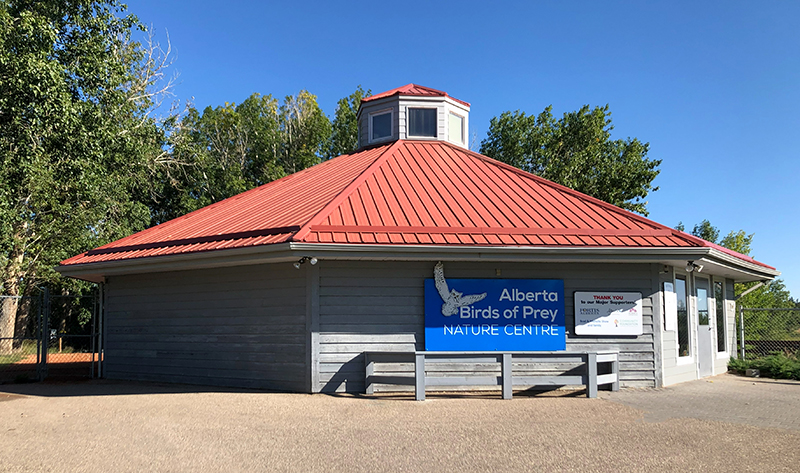
This weekend marks the end of the visitor season for the Alberta Birds of Prey Centre in Coaldale, Alberta. It’s a welcoming and beautiful facility home to many species of owls, hawks, eagles, and more.
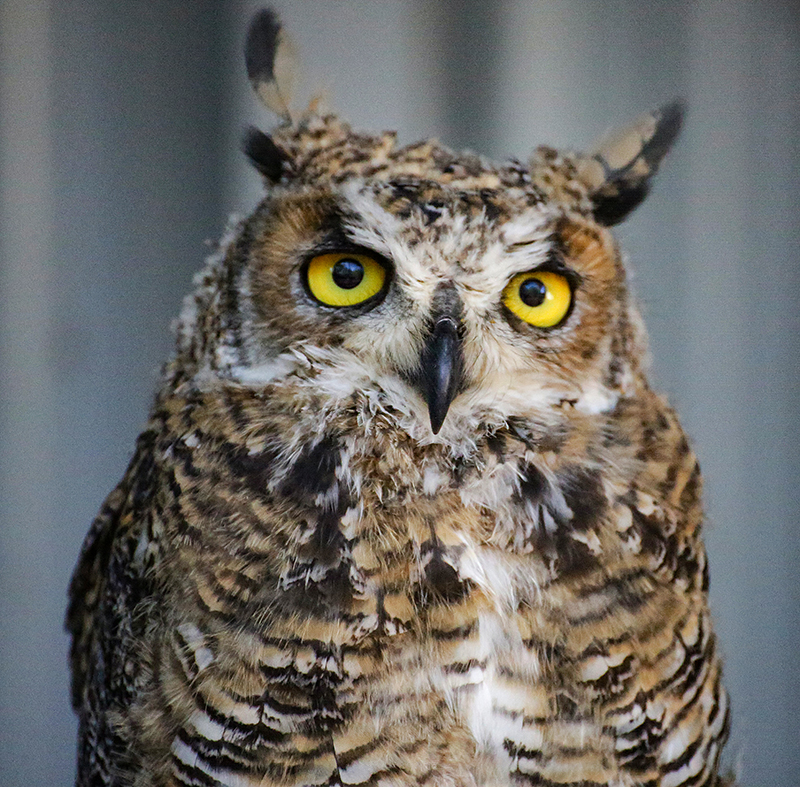
Cofounded, owned and operated by Colin Weir since the early 1980s, the dedication it takes to keep this place going is remarkable and impressive. On days I feel sorry for myself for not having had a day off in weeks, I remind myself that people like Colin (and my friend Serena at Discovery Wildlife Park) go many months without a day off, and sometimes that’s only a sick day when they’re really ill.
Caring for animals is a calling, and these critters require constant care. When I expressed my admiration for his commitment, Colin humbly dismissed his efforts and likened it to farming, saying it’s a lifestyle more than a job.
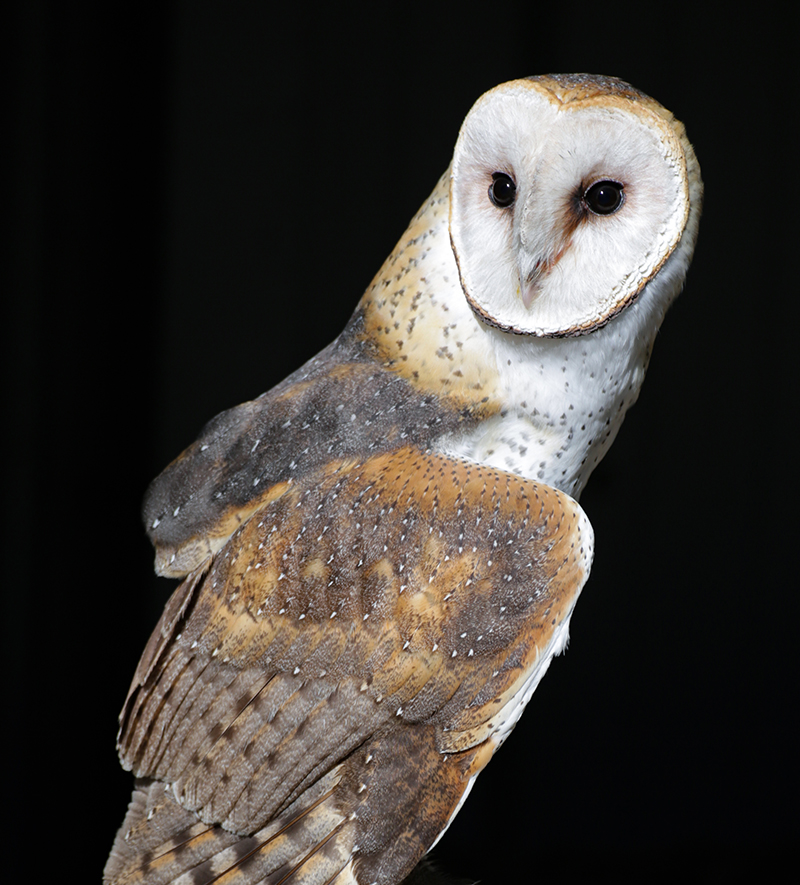
Colin is on call 24/7 year-round to rescue birds from all over Alberta. Though he can’t always be there in person, he’s told me that sometimes people just need encouragement and advice, a supportive voice on the phone to help them do what they can for a bird in need.
While many adult birds they rescue are nursed back to health and released, it’s not so cut and dry for birds missing a wing or for the little ones. Some will never develop the skills to survive on their own, but they find a home at the centre.
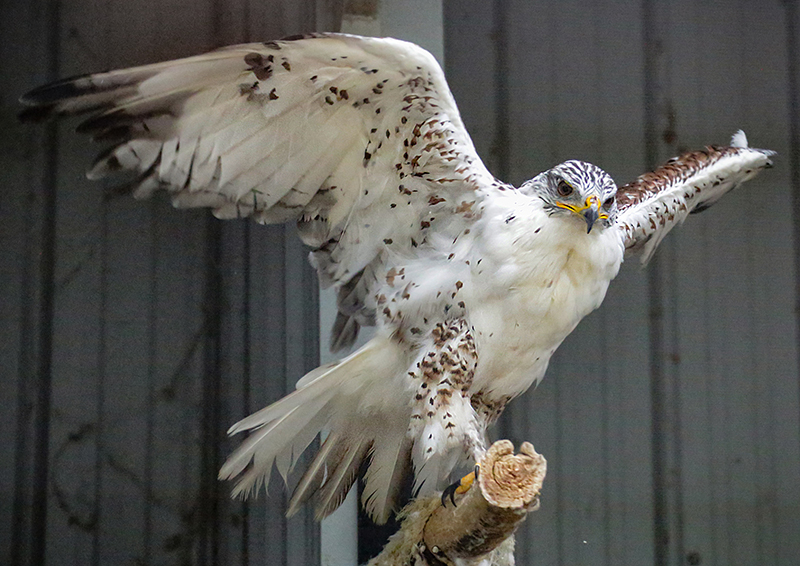
Years ago, I painted a Golden Eagle named Sarah. I had taken the reference for the painting when I first met Colin and his daughter, Aimee, on their visit to Canmore with some of their birds for a wildlife event. Sarah has been with Colin since she was a year old, and I was delighted to see her again. She is still healthy and doing well at 42 years old.
From their website, “We do not receive any government operating subsidies, which means we rely solely on donations and volunteers to keep the birds fed and cared for year-round. One hundred percent of all donations we receive is spent on programs and projects that directly benefit the wildlife and wetland habitat we strive to conserve.”
I could go on at great length about their incredible work for wildlife conservation and rehabilitation, but I’d rather you visit their website as it does a much better job than I would.
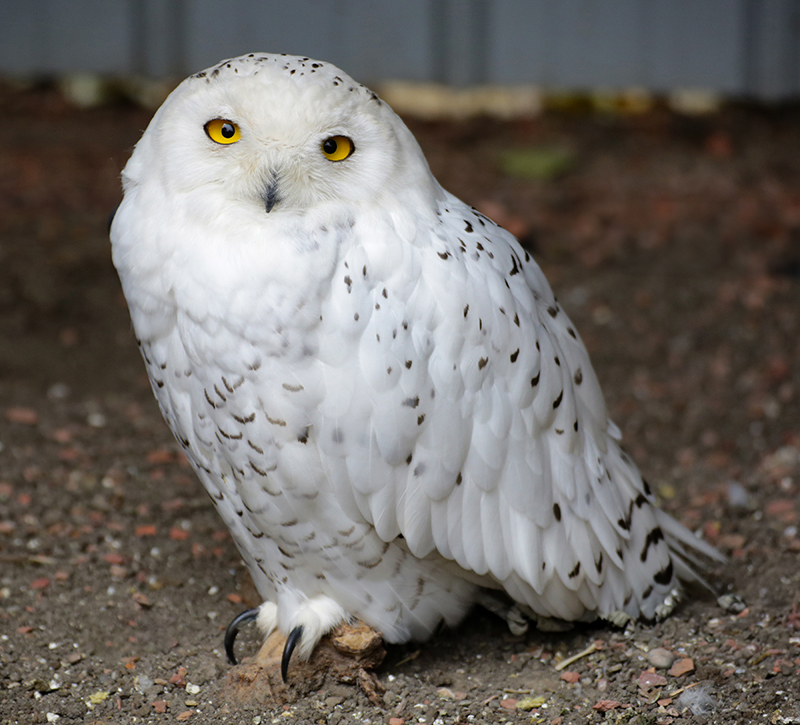
The Alberta Birds of Prey Foundation is an official charity, and I’ve been supporting them with a monthly donation for several years, but I’ve only been to the centre three times. It’s a 4-hour drive, which usually means an overnight stay.
From deadlines and workload to weather and wildfire smoke, something came up every time I planned to get down there this year. But with the season ending, I had to make it a priority this past week or wait until next year.
As luck would have it, Wednesday was one of the worst rainstorms I’ve seen in years. There was a heavy downpour for most of the drive, with a strong crosswind from Calgary to Lethbridge. With poor visibility, water-filled ruts grabbing at the tires, and fun with hydroplaning, I was relieved to arrive in Coaldale at about 1 PM.
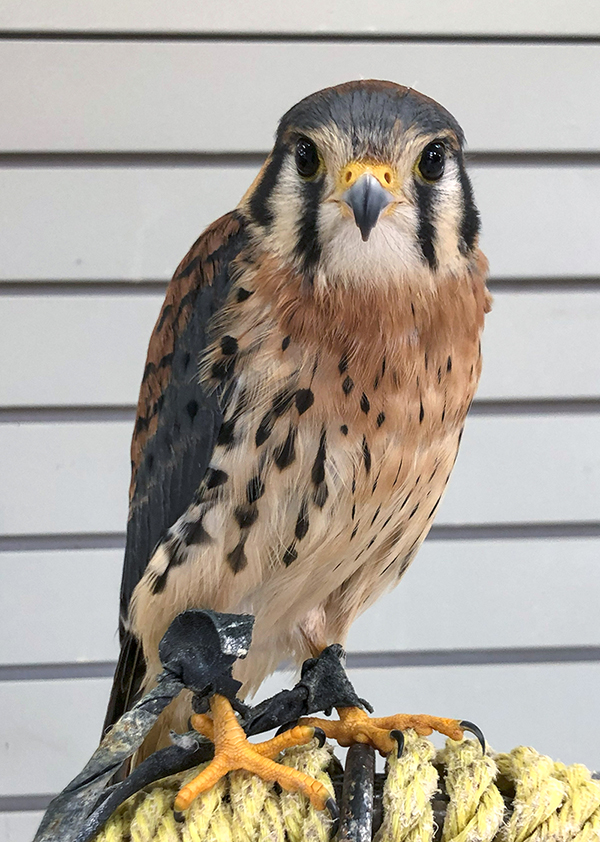
Finally, inside the centre’s entrance, I was met by adorable juvenile Burrowing Owls, a young Saw-whet Owl, and a Kestrel, all on perches, chortling and squawking away.
I immediately started snapping pics with my phone, thinking, “I want to paint you, and you, and you, and all of your friends and family.”
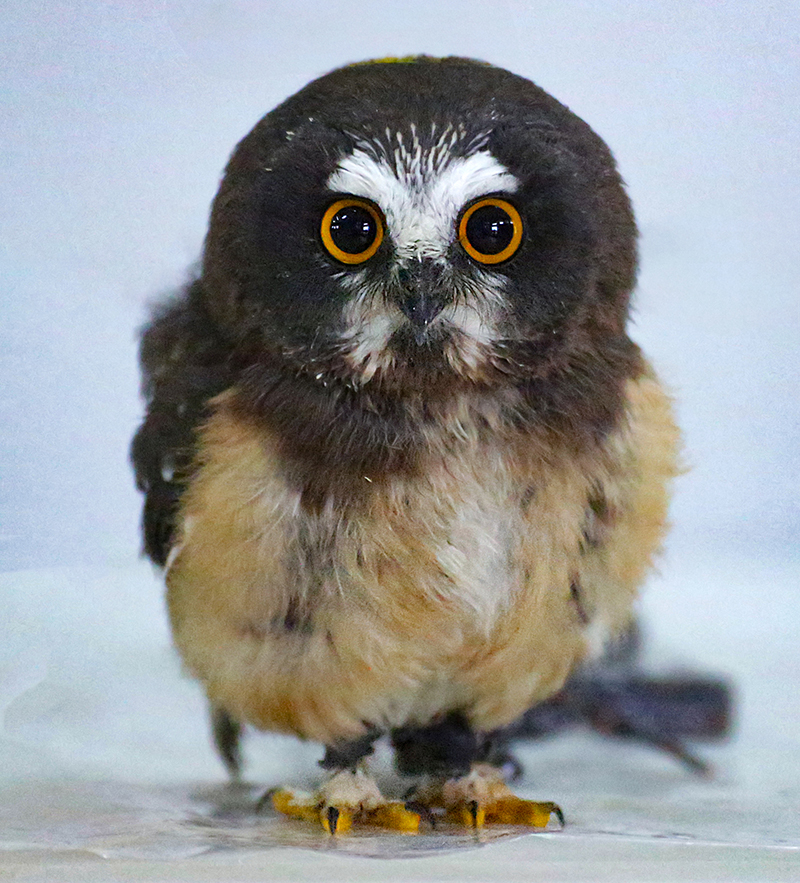
Colin had told me he was hosting a large group that day, but one of the staff said they had to cancel because of the weather. At that moment, I was the only guest in the whole place. I spent the next few hours taking photos on what felt like my own private tour.
On the weather app radar, the vast rain system occupied much of southern and central Alberta, rotating like a tropical storm. However, the eye settled and turned over Lethbridge and Coaldale for most of the afternoon. Cool and blustery, but no rain for a while, and fantastic light. A few other guests showed up, but the afternoon was quiet.
Just before 4, the rain began again, and I retreated to my hotel for the evening. It poured all night, but I woke to a clear morning and a light wind, perfect for another visit with the birds.
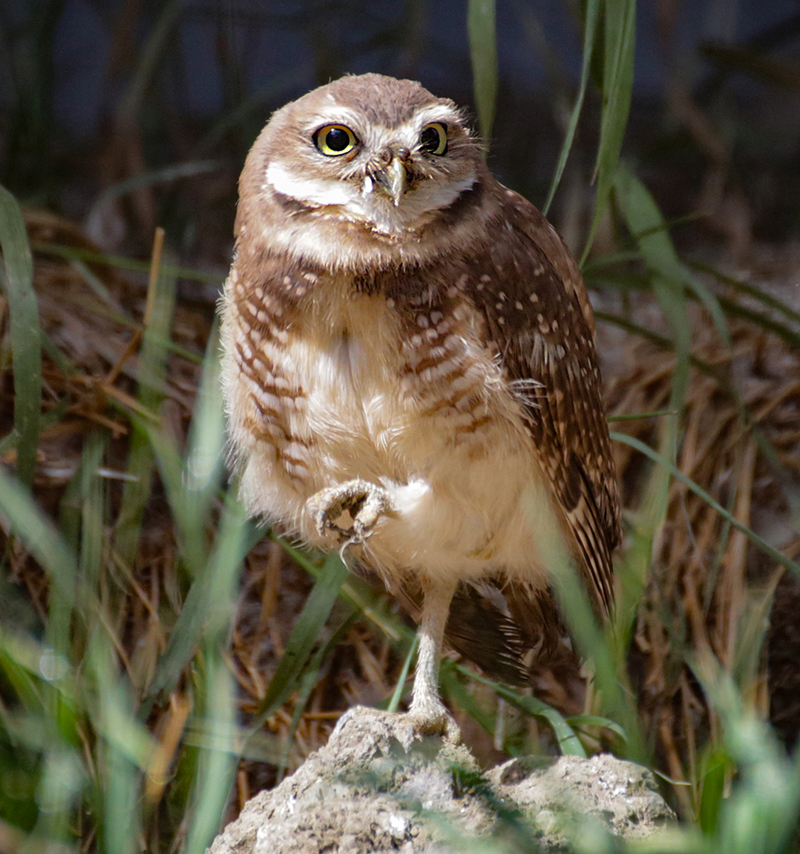
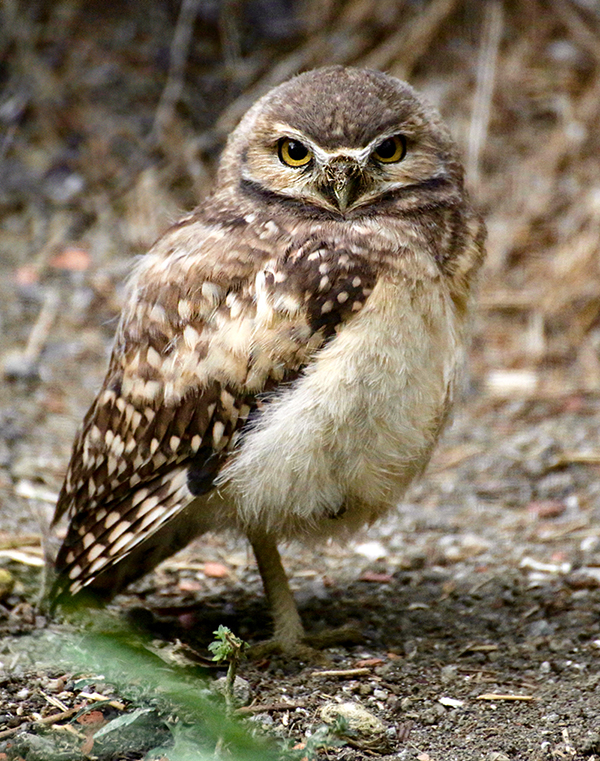
One of the reasons I wanted to get there before they closed for the season was to try and capture some shots of the flight training. For birds that can’t be released, they get regular exercise on two long runways where they fly back and forth for food.
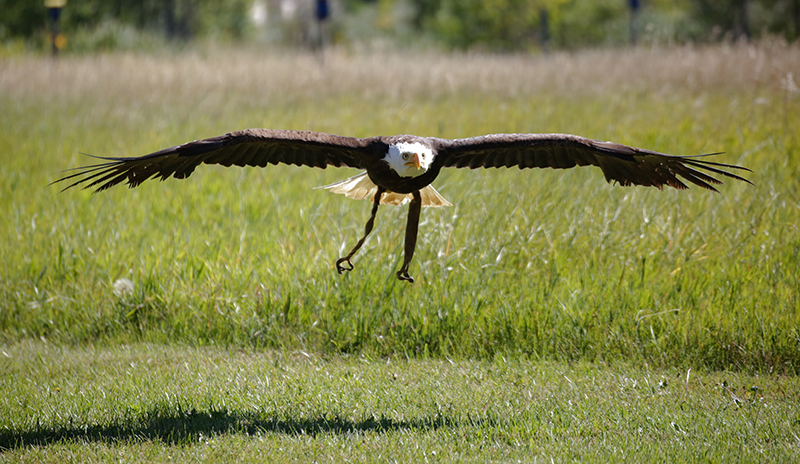
Our romantic notion of eagles flying for the sheer joy of it, simply because they can, isn’t supported by reality. Birds of prey are pretty lazy, and if they don’t have to hunt, they’ll sit in a tree all day. The caregivers at the centre need to be careful not to feed them before flight training because if they aren’t hungry, they won’t fly.
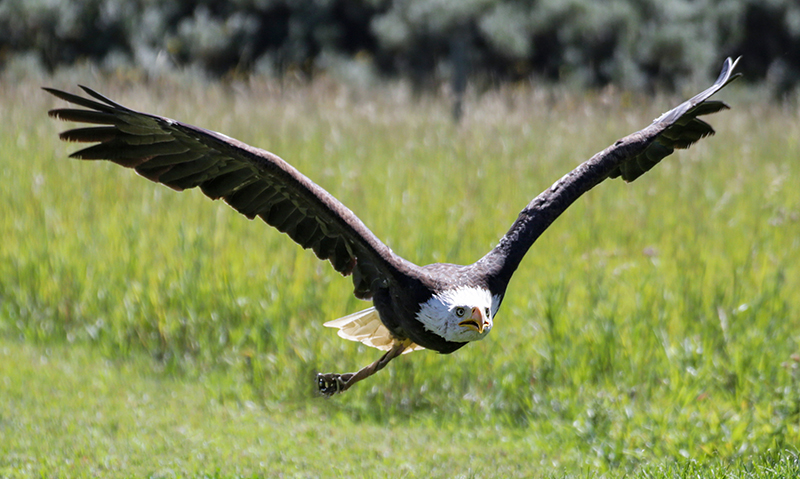
They also tend to overheat, and it only takes two or three flights down the runway before an eagle will pant like a dog to cool off. After the training, they’re taken back to the aviary when handlers allow younger guests to give the birds a rain shower with the hose to help them cool down, something the birds clearly enjoy.
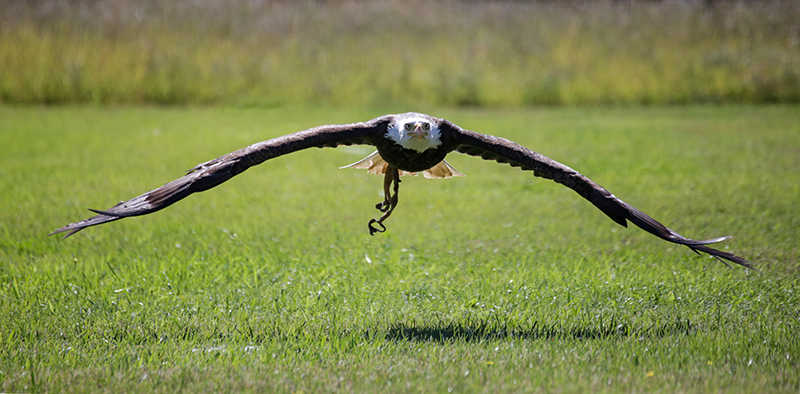
While the storm conditions made the light great on my first day, the wind cancelled the flight training. Clear skies and sunshine on Thursday made for good flying conditions, but the light was too bright, so while I enjoyed watching them fly, I didn’t get any good action shots for painting reference.
Wildlife and weather, you can’t count on either.
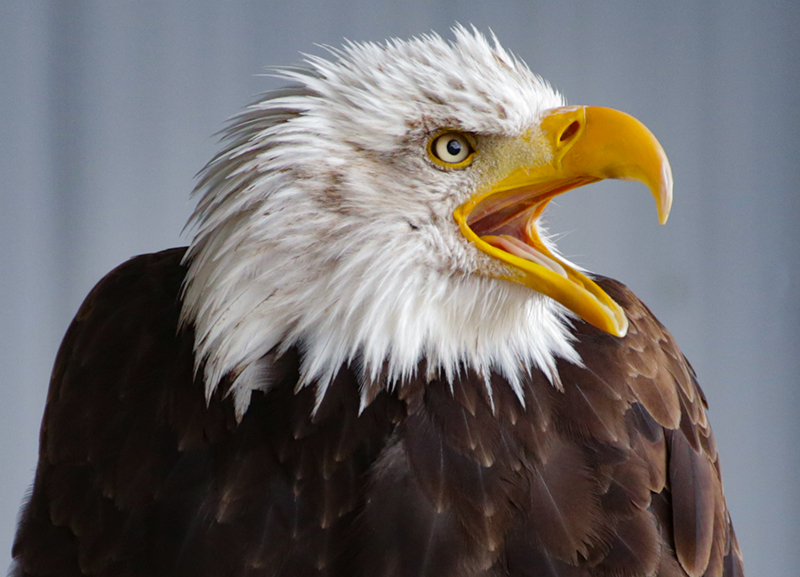
I still took plenty of reference photos for future paintings, especially for one bird I’ve wanted to paint for years. And had I returned home with only the shots I’d taken thus far, I would have been pleased with the visit.
But after the first flight training, Colin texted me to meet him at the gift shop. He’d been off the property on Wednesday and responding to a rescue call that morning, so I hadn’t seen him yet.
I was pleased to see him again, as I hadn’t since my last visit in 2021. Colin told me he had a surprise for me outside. We walked out to his truck with Miyah, one of the senior staff, and he said he was going to let me release two Swainson’s Hawks back into the wild.
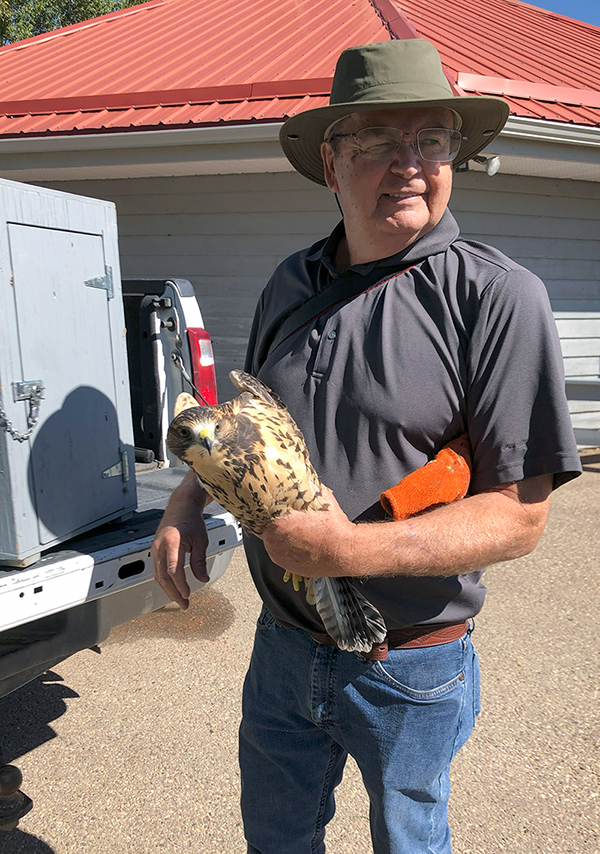
I would have been content just to see a release, but to let one go myself (let alone two) was an unexpected thrill. I thought perhaps I’d just be opening the door on a box, but I soon realized Colin was about to hand me an adult hawk…twice!
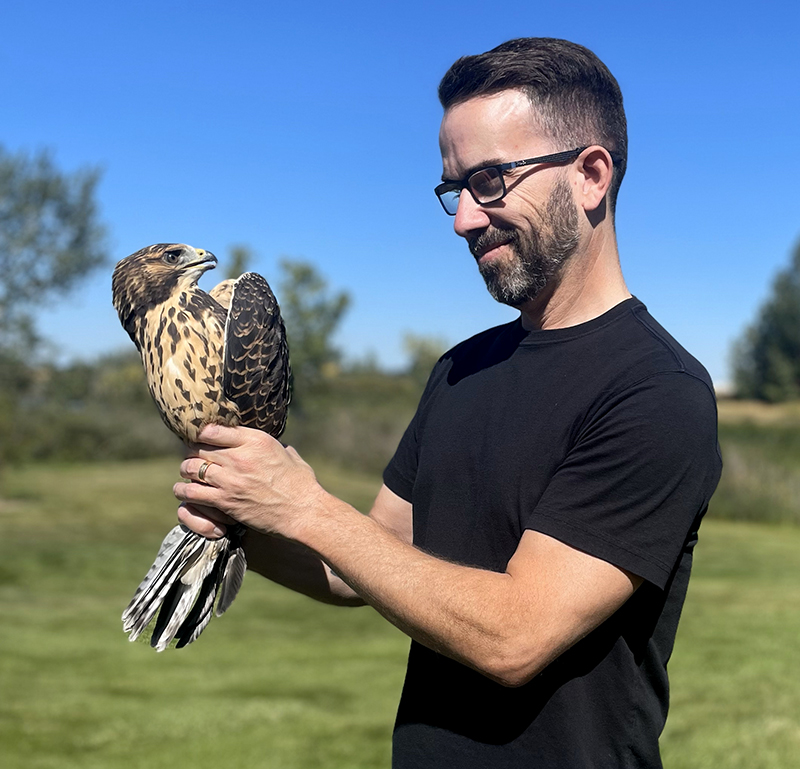
Obviously well practiced in making this experience memorable for anyone granted this honour, Colin’s instructions were clear and specific to ensure the birds’ safety and be in the correct position for the best possible photos. He and Miyah had cameras ready to capture the releases and took plenty of pictures for me.
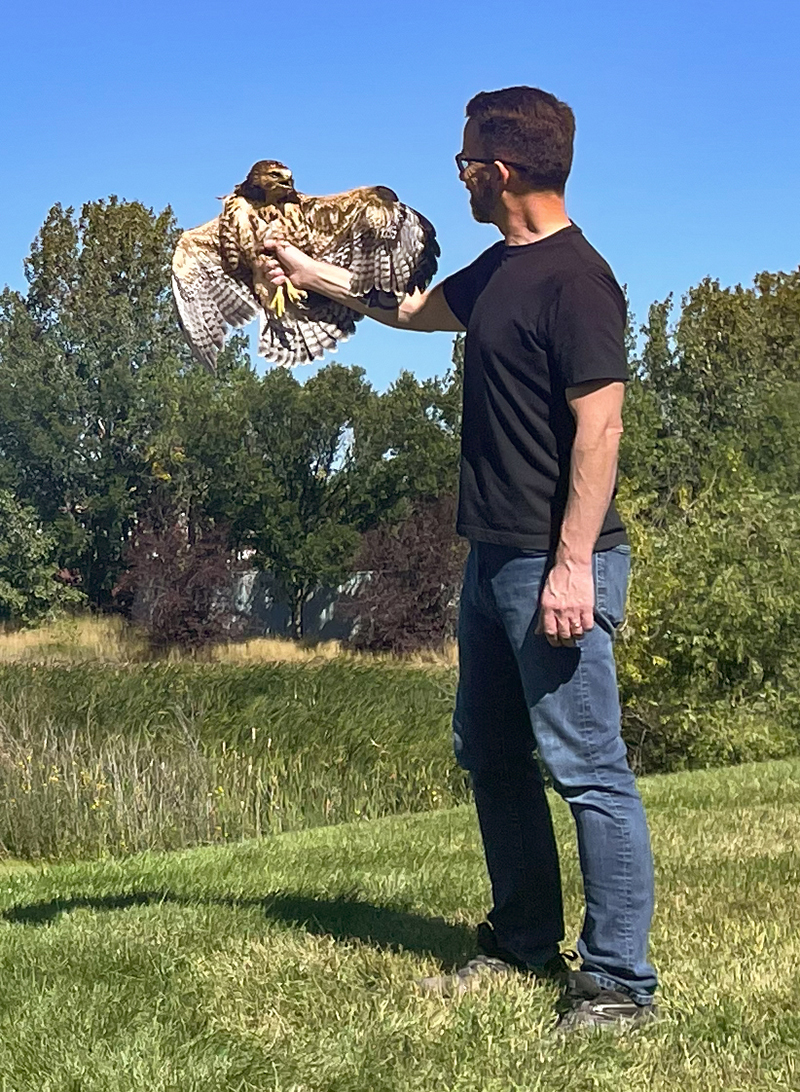
While I wasn’t as graceful as an experienced hawk-thrower, I thrust each bird forward and upward as instructed and let go, a great feeling to see recovered birds once again flying free. Hopefully, mine are the last hands those birds ever feel, and they live a long and healthy life in the wild, thanks to the tireless efforts of Colin and his team.
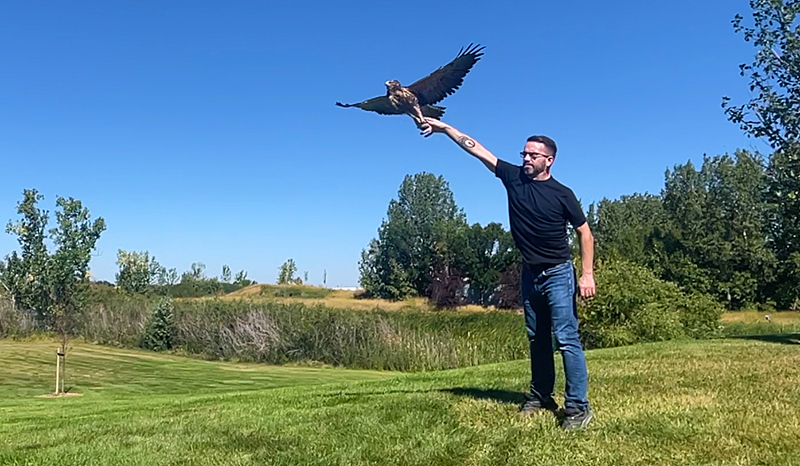
On the sunny, pleasant return drive home, I had time to reflect on the incredible privilege of having had that experience. I didn’t do any work to save those birds, but I got the reward. What a gift.
Their last day of the season for visitor access is Monday September 2nd. If a last minute trip isn’t in the cards for you or your family this weekend, the Alberta Birds of Prey Centre will open again in May. If you plan to be near the Lethbridge area next spring or summer, make a side trip to Coaldale and see these birds for yourself. In the meantime, visit their website or follow their efforts on Facebook and Instagram. Support them if you can.
Many facilities like this exist in communities worldwide, run by dedicated animal lovers trying to help nature keep up with our impact on the planet. Please consider donating to one of them to help these folks continue to do their incredible work for wildlife conservation.



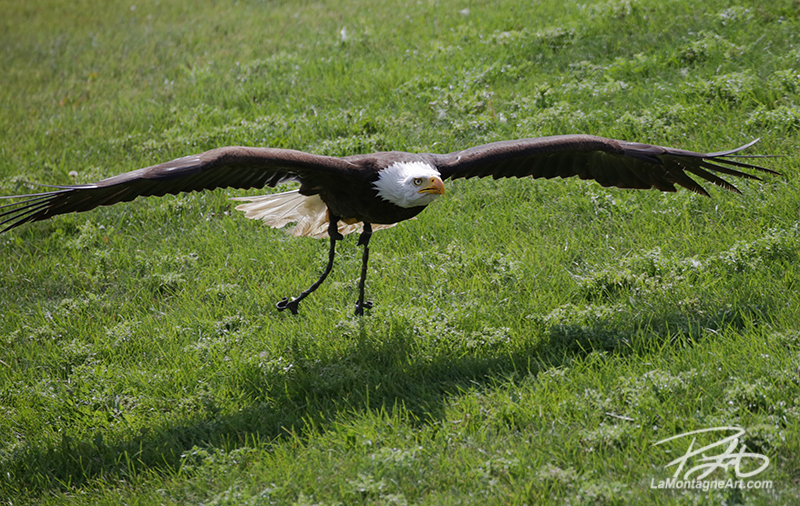 This past Thursday, I drove the four hours down to Coaldale, Alberta, to visit the
This past Thursday, I drove the four hours down to Coaldale, Alberta, to visit the 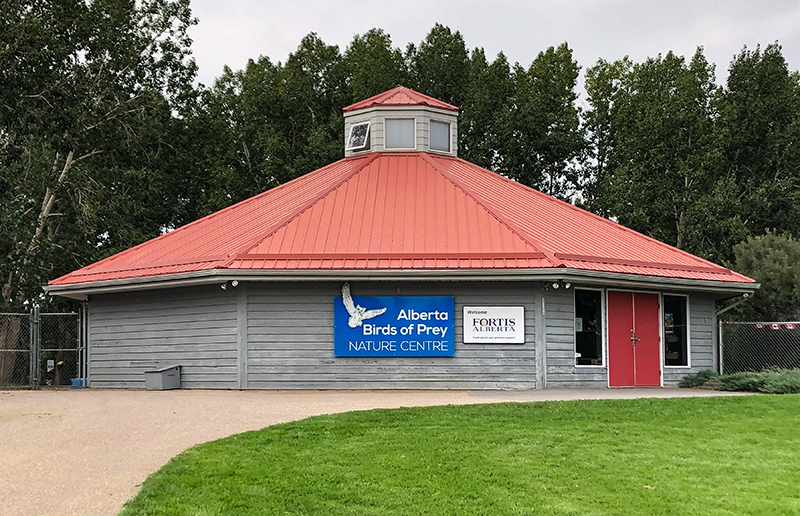 The Alberta Birds of Prey Foundation began in 1982 when there weren’t any wildlife rescue endeavours operating in Western Canada. Colin has been rescuing, rehabilitating, and releasing birds of prey back into the wild for almost forty years. Birds with permanent injuries or those that can’t be released have been given homes at the centre, a beautiful spot in southern Alberta, right in the middle of a reclaimed wetlands area.
The Alberta Birds of Prey Foundation began in 1982 when there weren’t any wildlife rescue endeavours operating in Western Canada. Colin has been rescuing, rehabilitating, and releasing birds of prey back into the wild for almost forty years. Birds with permanent injuries or those that can’t be released have been given homes at the centre, a beautiful spot in southern Alberta, right in the middle of a reclaimed wetlands area.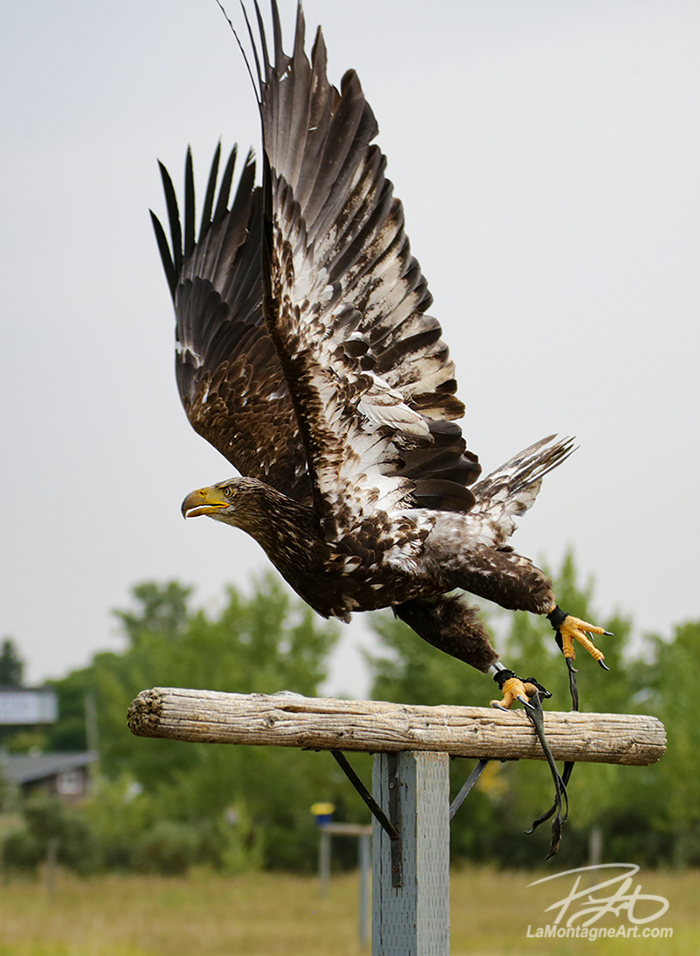 As with any non-profit operation, caring for the birds is only half the battle, and it’s a never-ending quest to raise enough funds and resources. To attract people to the centre, it must be safe, appealing, and well-maintained, a feat they have managed well. The Alberta Birds of Prey Centre is an attractive, professional, and welcoming facility. All the enclosures, aviaries and structures are top-notch, serving as housing and rehab areas for the birds and an educational facility for the public.
As with any non-profit operation, caring for the birds is only half the battle, and it’s a never-ending quest to raise enough funds and resources. To attract people to the centre, it must be safe, appealing, and well-maintained, a feat they have managed well. The Alberta Birds of Prey Centre is an attractive, professional, and welcoming facility. All the enclosures, aviaries and structures are top-notch, serving as housing and rehab areas for the birds and an educational facility for the public.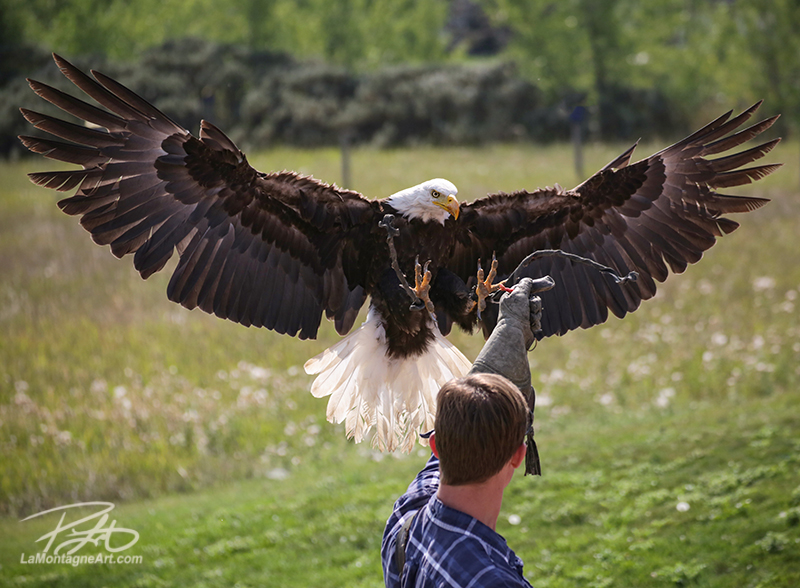 I’ve wanted to get down to the centre more than once this summer, but as with all things these past many months, best intentions haven’t always aligned with feasibility. Plagued with long stretches of record-breaking heat, a thick choking blanket of wildfire smoke for weeks on end and the uncertainty of changing pandemic restrictions, this summer has been challenging. Add long hours in the office working to diversify my business, and I haven’t been able to get away.
I’ve wanted to get down to the centre more than once this summer, but as with all things these past many months, best intentions haven’t always aligned with feasibility. Plagued with long stretches of record-breaking heat, a thick choking blanket of wildfire smoke for weeks on end and the uncertainty of changing pandemic restrictions, this summer has been challenging. Add long hours in the office working to diversify my business, and I haven’t been able to get away.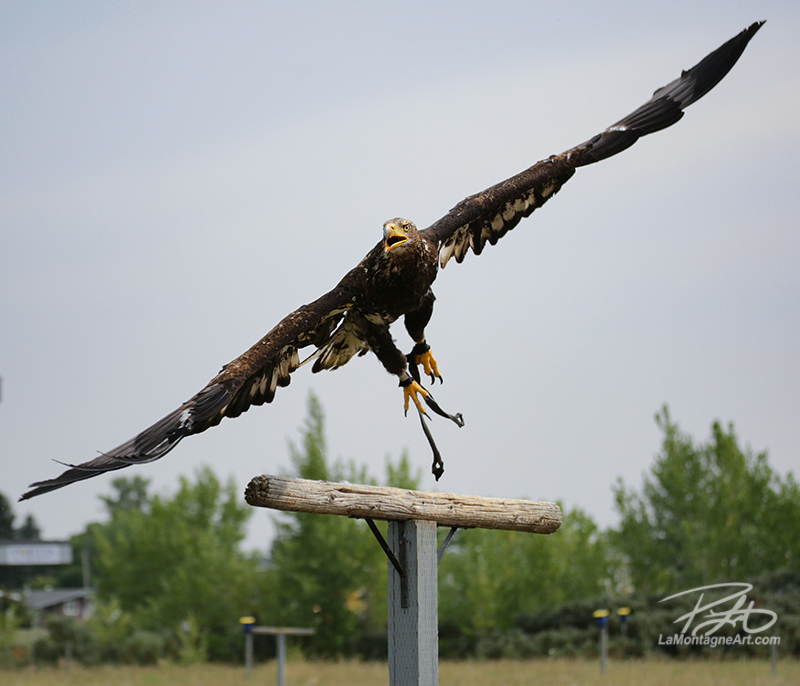 Over two days, I watched them fly a mature bald eagle, a juvenile bald eagle, and two red-tailed hawks. Bald eagles don’t get their full head of white feathers until four or five years old. One of the staff suggested on the second morning that I lie down on the ‘runway’ to take some head-on shots of the red-tailed hawk. To take advantage of a cushion of air just above the ground, the birds drop down low when they’re flying back and forth, only climbing again at the end.
Over two days, I watched them fly a mature bald eagle, a juvenile bald eagle, and two red-tailed hawks. Bald eagles don’t get their full head of white feathers until four or five years old. One of the staff suggested on the second morning that I lie down on the ‘runway’ to take some head-on shots of the red-tailed hawk. To take advantage of a cushion of air just above the ground, the birds drop down low when they’re flying back and forth, only climbing again at the end.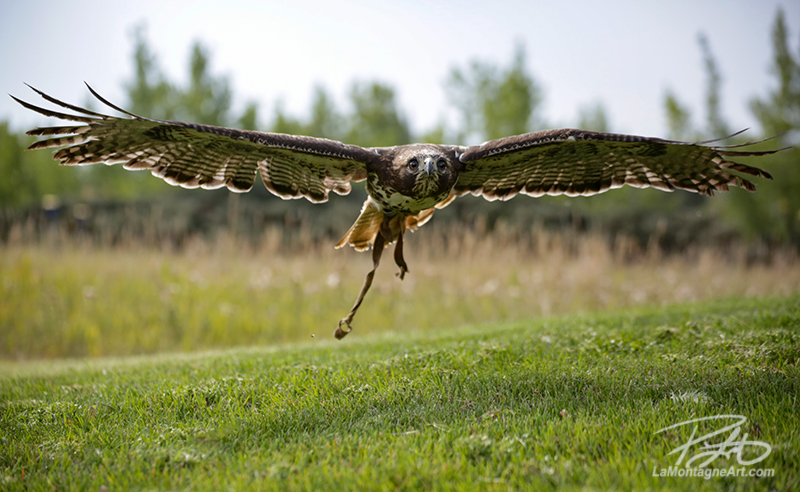 I could write a few thousand more words on their important work and all I learn whenever I visit the Alberta Birds of Prey Centre. The staff share some fascinating and amusing stories during the flight training presentation and are always available for questions from visitors. Nothing is off-limits, and they’re more than willing to talk about the challenges they face each day while caring for these birds.
I could write a few thousand more words on their important work and all I learn whenever I visit the Alberta Birds of Prey Centre. The staff share some fascinating and amusing stories during the flight training presentation and are always available for questions from visitors. Nothing is off-limits, and they’re more than willing to talk about the challenges they face each day while caring for these birds.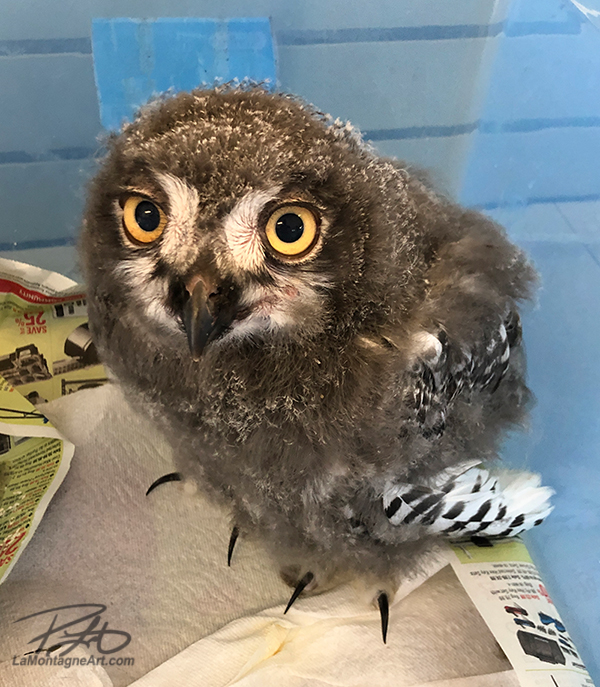
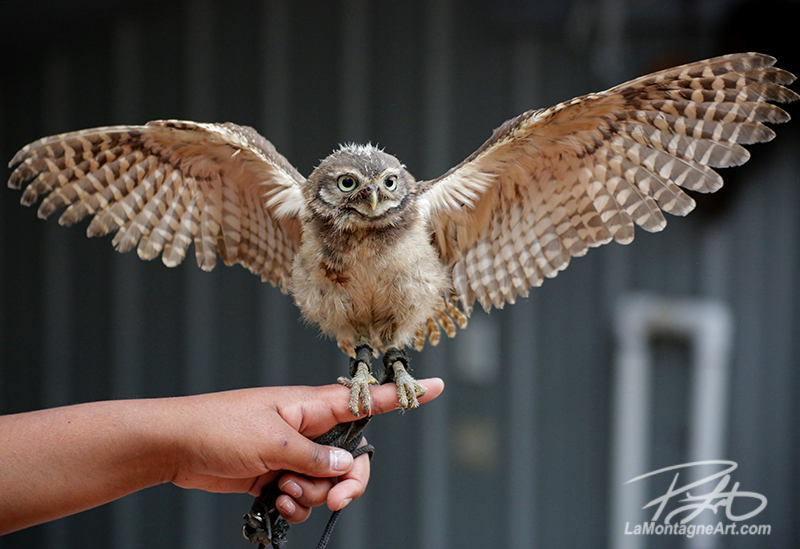

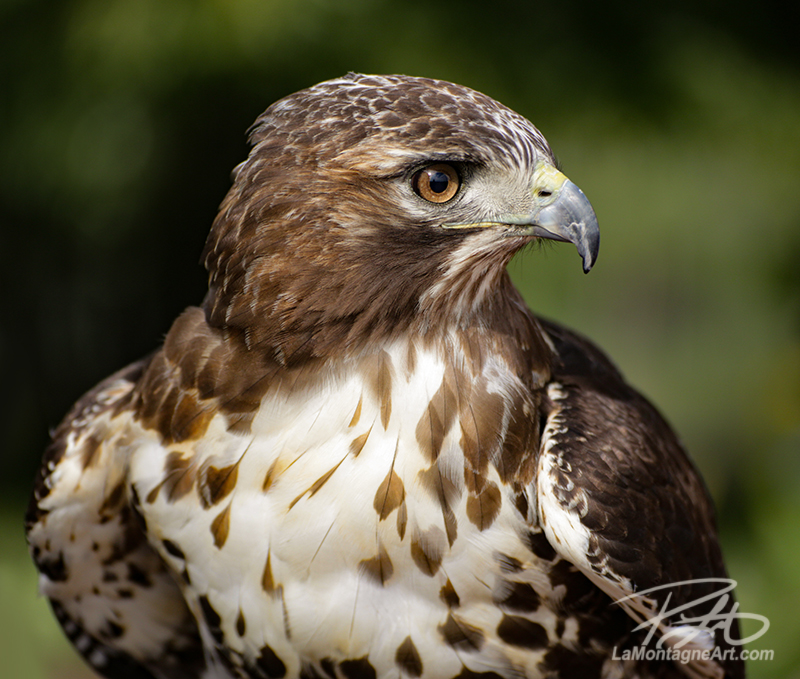 Best of all, I finally have more than enough shots of a red-tailed hawk, so many good ones that I’ll have a hard time deciding which to use. Or maybe I’ll have to paint more than one. It’s a good problem to have. Feathers are much harder to paint than fur, especially when intricate patterns are involved, so don’t expect a painting anytime soon. It’ll likely be a winter project, but one I’m eager to start.
Best of all, I finally have more than enough shots of a red-tailed hawk, so many good ones that I’ll have a hard time deciding which to use. Or maybe I’ll have to paint more than one. It’s a good problem to have. Feathers are much harder to paint than fur, especially when intricate patterns are involved, so don’t expect a painting anytime soon. It’ll likely be a winter project, but one I’m eager to start.


